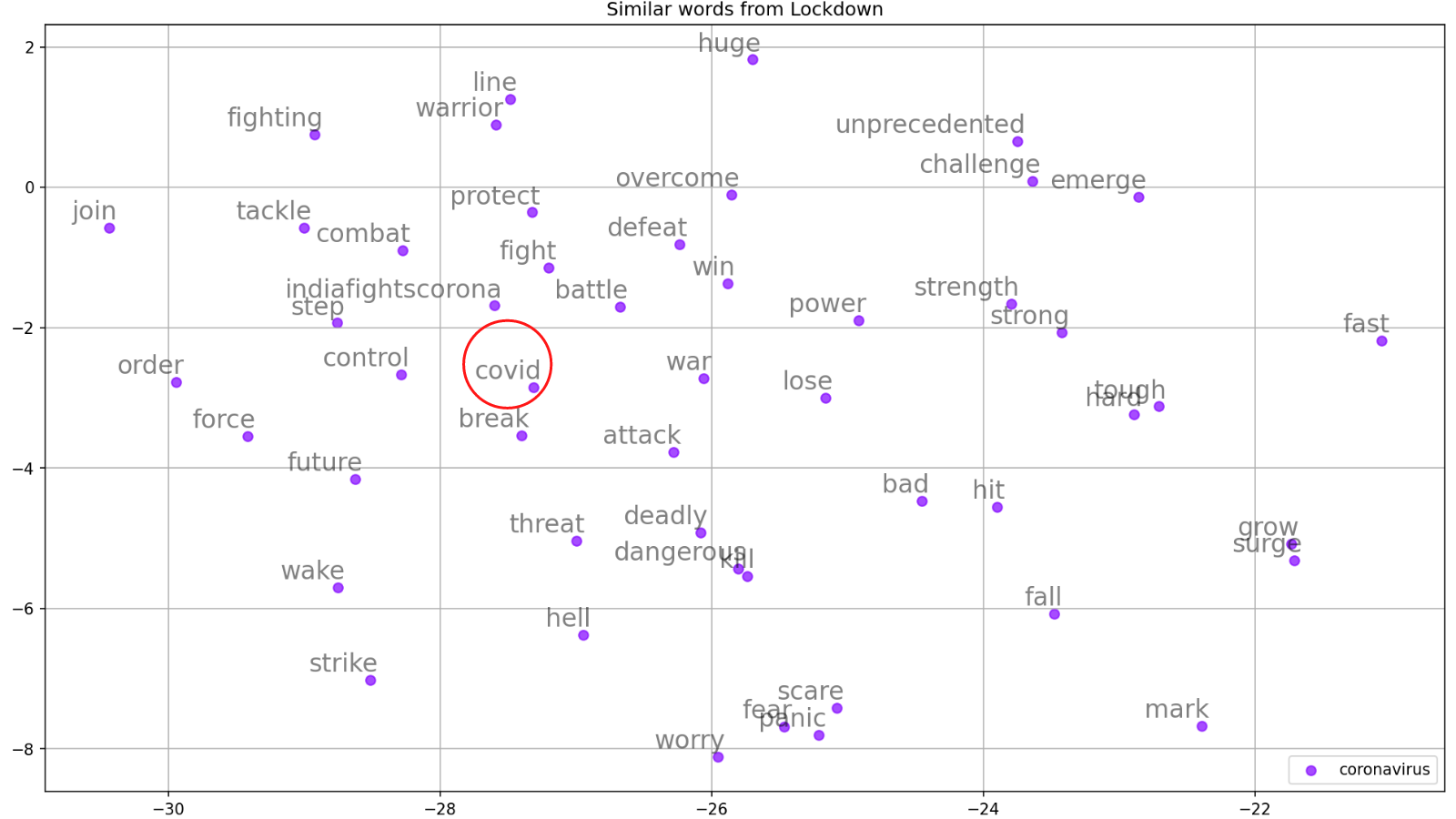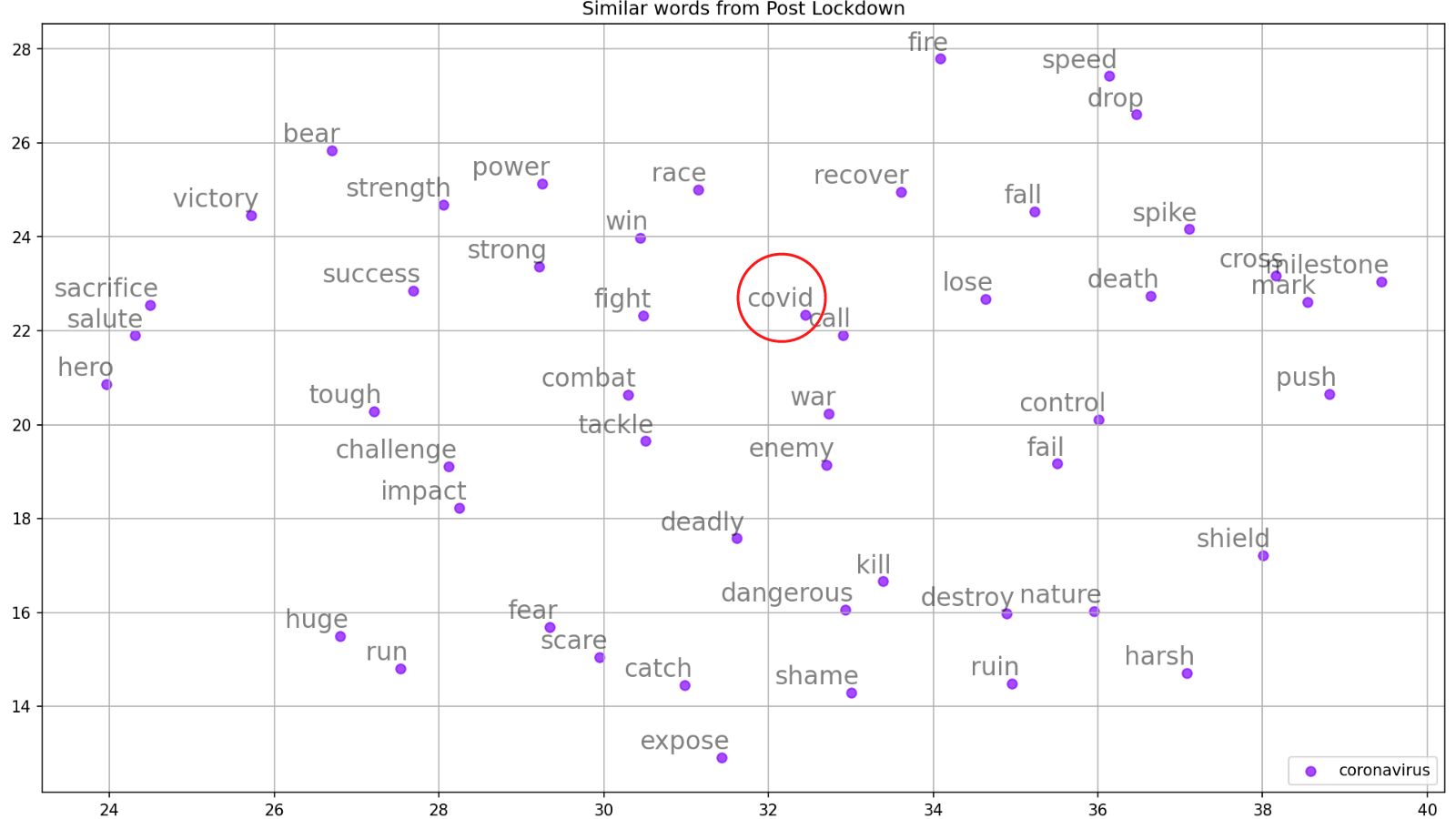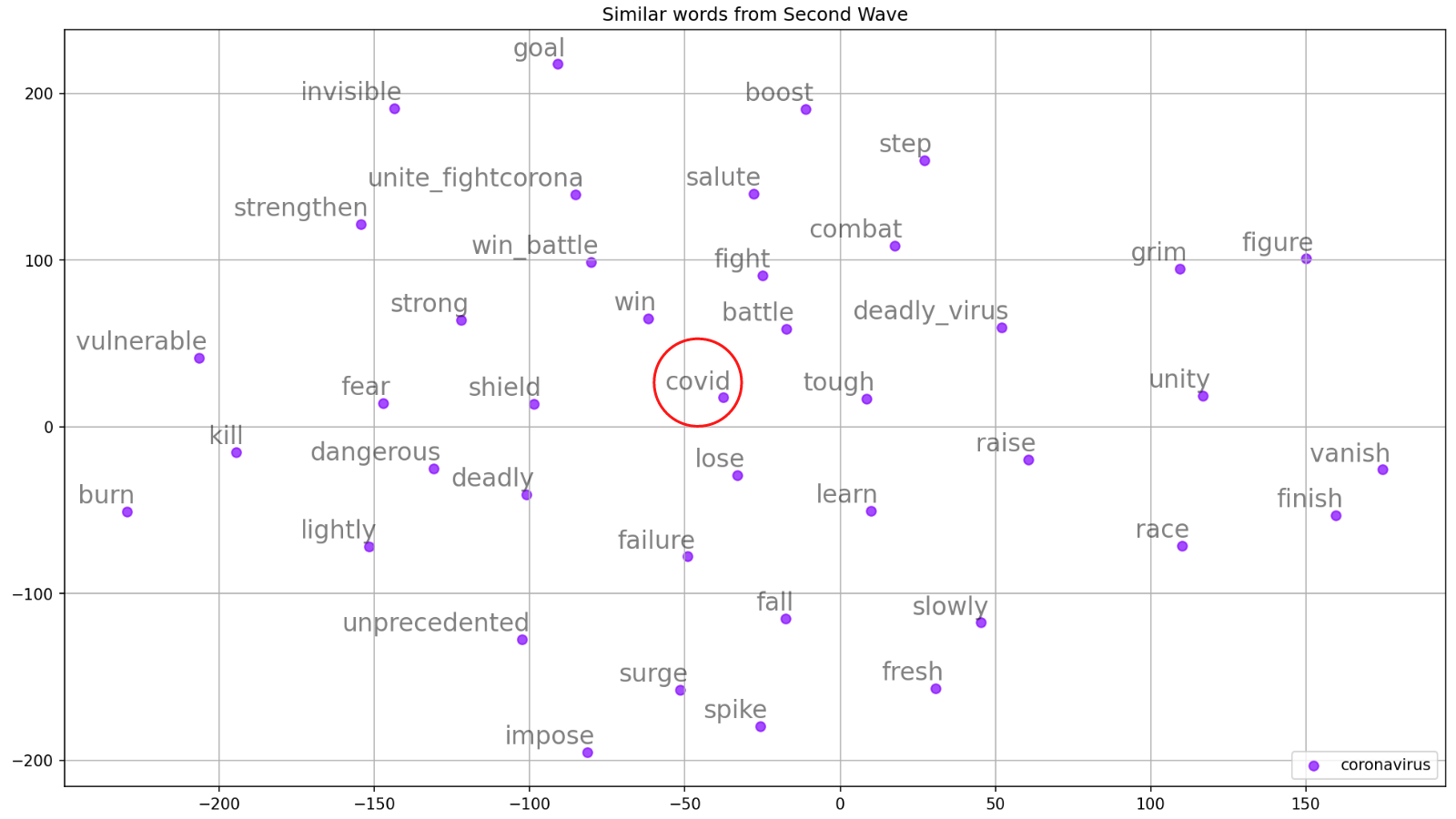Metaphors are cognitive constructs that connects apparently unrelated domains. Lakoff and Johnson defined metaphors as a tool that enables people to use what they know about their direct physical and social experiences to understand more abstract things like work, time, mental activity and feelings.

Consider the above mapping where the elusive notion of DREAMS is mapped to a more widely observed entity BUTTERFLIES to express meanings such as vibrant and colorful in a conversation.
Metaphorical constructs are everywhere; in our daily discussions, drama, political speeches, and poetry. These constructs reflect one’s inner feelings and are used to guide readers to intended meaning. Look at these political phrases such as khooni panja for congress’s election symbol, maut ka suadagar, Upadravi Gotra and many more crafted carefully to deliver the target message amongst masses.

Metaphors of COVID-19
When COVID-19 striked India, metaphors comparing COVID-19 virus to enemy, monster and even devil were widely used. Pandemic was equated to war, tsunami, race etc. The aim was to attract people’s attention, convey the urgency of the situation and infuse a feeling of togetherness. However, the discussion quickly took an unexpected turn where these mapping actually started creating a rift amongst different sections of society. Metaphors borrowed from the domain DARKNESS, DISASTER, and STIGMA led to pessimistic perception with a nagging sense of helplessness and isolation. So, how do we track people thoughts, feelings and reactions when the meanings are not explicit and expressed using figurative constructs?
Evolving Perception towards COVID-19
Diachronic word embeddings are used to track semantic shifts in the meaning of a concept. We can thus model the shift in the meaning of metaphorical constructs by analysing embedding space made from tweets in discrete time space namely,
- lockdown i.e. Mar’20 to Jun’20
- post lockdown i.e. July’20 to Oct’20 and,
- second wave i.e. Mar’21 to Jun’21.
Lockdown Phase
Below is the first plot illustrating the neighbourhood of covid during the lockdown. The representations are learned using word2vec skipgram model by training on metaphorical tweets posted during the lockdown phase. The words closer to covid indicates high relatedness with covid-19.

Here, COVID-19 is conceptualized as WAR (fight, battle, deadly, break, war), MONSTER (protect, threat, deadly, dangerous), and even as an OBSTACLE/GAME (challenge, overcome, strike, tackle). India had only few reported cases of COVID-19 in the lockdown phase. Nevertheless, the metaphors are grim and fear inducing.
Post-Lockdown Phase

Post-Lockdown is the phase where India faced the first wave of COVID-19. COVID-19 is discussed using concepts such as race, win, fight, combat, tackle. Moreover, even WAR metaphors are used in more authoritative fashion indicating the transition in the meaning of WAR metaphors while discussing COVID-19. Metaphors such as duty, strategy, push, tackle, brave, fighter, crusader convey a sense of control, a more confident and controlled reaction to the pandemic.
Second Wave

Highest volume of metaphors were posted in the Second Wave phase. Negative metaphors such as battle, deadly, crisis, suffer, defeat, dangerous came closer to covid compared with the previous two phases. Increased occurrence of DISASTER/DARKNESS metaphors such as grim, catastrophe, devastating, disaster, panic, nightmare, gloom, danger, tsunami etc is observed. Metaphors such as breach, blame, rage, pressure from GAME domain indicating the shift in meaning of GAME metaphors.
There is a clear difference in the underlying emotional tone of metaphors when compared with the first wave phase. The first wave definitely saw a controlled strategy with manageable COVID-19 cases whereas the second wave witnessed more suffering, panic and lack of control which is also evident from the metaphors.
Metaphors serve as the mirror of one’s psyche and are helpful in understanding the pulse of a society. Our experiment revealed that source domains such as WAR, MONSTER, PRISON, LESSON/TEACHER, SUCCESS/ CHALLENGE imparted a more positive influence in the Covid-19 discourse on twitter. This reaction of people is in contrast to prior work who state that the use of WAR and related metaphors paints a more negative picture about the pandemic. Looking through example tweets from these domains in an Indian context, we see that the presence of such metaphors excites a feel of encouragement on Twitter wherein Indians feel it as a duty to fight and defend their country from COVID-19.
Reference
Khaliq, A M., Joseph, R. & Rai, S. (2021) #covid is war and #vaccine is weapon? COVID-19 metaphors in India. In the 18th Proceedings of International Conference on Natural Language Processing (ICON), NLPAI. Available at Link
Image credits: Shutterstock